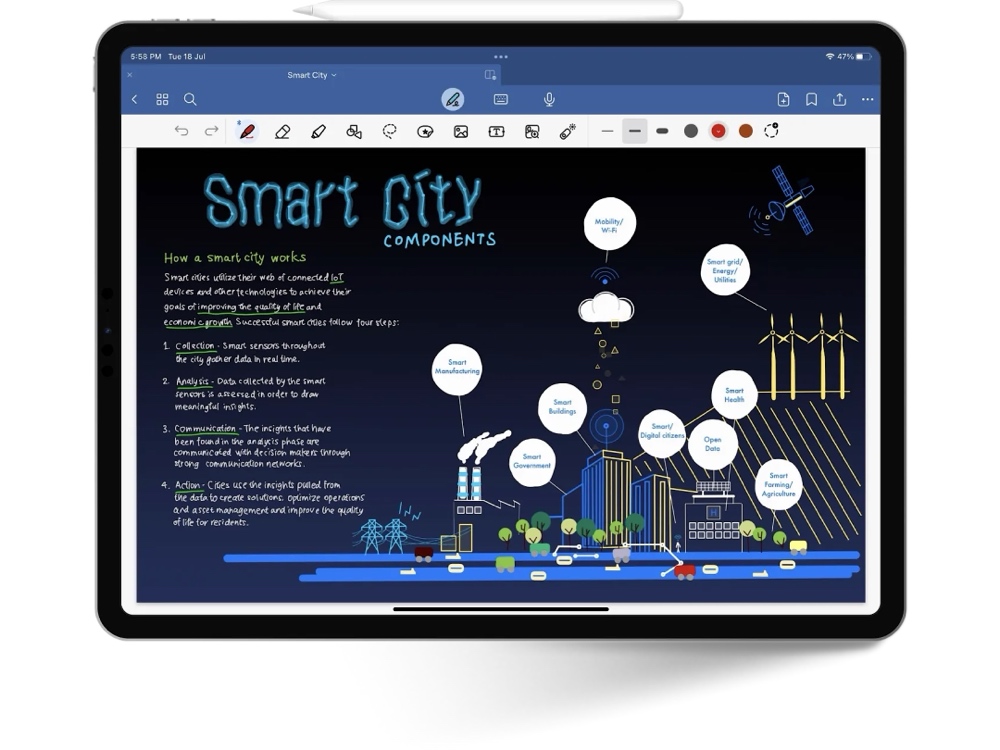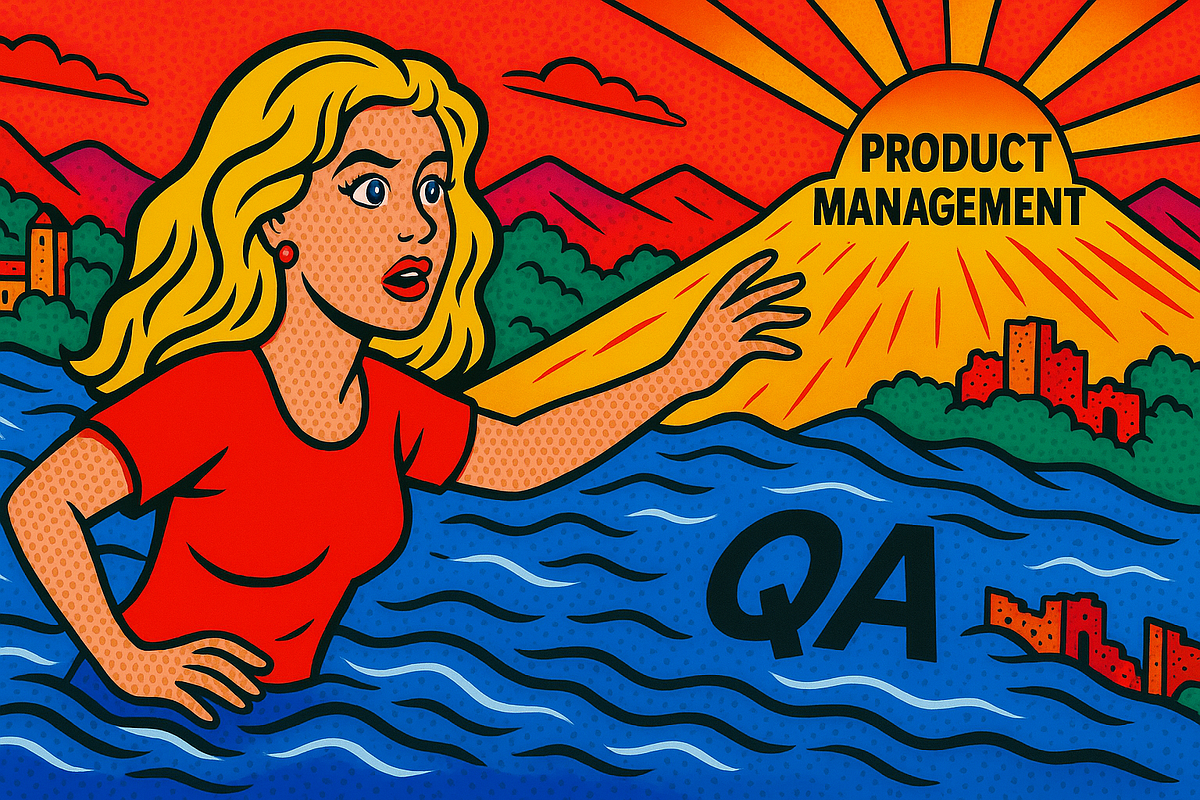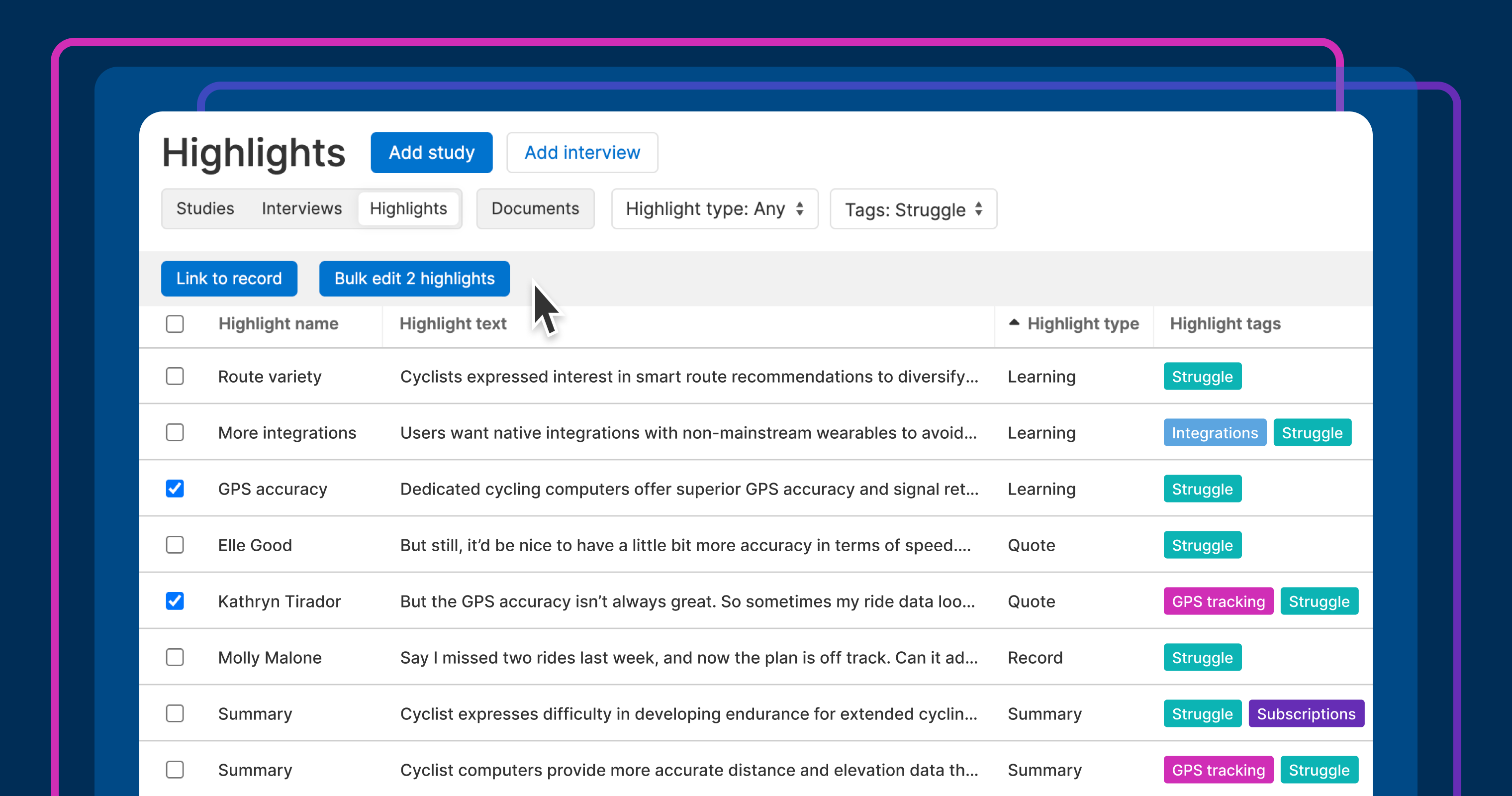10 Strategy Reads That Meet the Moment
Carolyn Geason-Beissel / MIT SMR | Getty Images In a time of perpetual disruption, competitive advantage no longer belongs to those with the best-laid plans but to those who can adapt quickly, think deeply, and act intentionally. These 10 articles from MIT Sloan Management Review reveal strategic insights from executives, researchers, and thought leaders confronting […]

Carolyn Geason-Beissel / MIT SMR | Getty Images

In a time of perpetual disruption, competitive advantage no longer belongs to those with the best-laid plans but to those who can adapt quickly, think deeply, and act intentionally. These 10 articles from MIT Sloan Management Review reveal strategic insights from executives, researchers, and thought leaders confronting a radically changing business environment head-on.
From the foundational lessons of Clayton Christensen on the evolution of advantage to insights from Lego’s cultural evolution incorporating “playground builders,” this collection highlights one clear message: Business strategy is no longer a static document. It’s a living system — shaped by uncertainty, executed with focus, and scaled through culture.
Whether managing a supply chain in a volatile trade landscape, redefining KPIs with AI, or opening up the strategic process to voices outside the C-suite, leaders are changing the very definition of strategic planning. What’s emerging is not a single blueprint but a collective playbook grounded in agility, systems thinking, and human-centric innovation.
These 10 excerpts offer not just theory but practical insight to sharpen your strategic edge.
1. Managing Supply Chains in a Tariff-Fueled Trade War
Yossi Sheffi
“Companies routinely retune their supply chains in response to market changes, but the gyrations caused by the Trump administration’s on/off tariff regime are far from routine. How do supply chain planners address the immediate challenges, and what are the long-term implications they should consider?
“Many larger companies can cope with the new level of uncertainty they now face. When the tariff policies were announced, I participated in a gathering of chief supply chain officers from some of the world’s biggest companies. The consensus among the participants was that managing the new tariffs requires a lot of work, but having already endured COVID-19 and various armed conflicts worldwide, they regard this as just ‘another day in the office.’ These market leaders will quickly re-optimize their networks, relationships, orders, products, contracts, routes, and prices, mitigating the worst impacts of the tariffs.
“Still, mitigating the impacts completely, or even significantly, will be challenging. This is particularly true for companies that do not possess larger rivals’ supply chain planning resources. For many enterprises, steering a course through these treacherous tariff waters is a matter of survival.
“While each enterprise’s approach to the challenge is unique, some key elements are common to most strategies.”
2. Building One KPI to Rule Them All
Omri Morgenshtern and Tarik Fadil
“Key performance indicators are critical tools for evaluating how effectively a company is executing strategy and for making optimal decisions. When KPIs are well chosen and well defined, they help everyone focus on the particular business results that matter the most. …
“But constructing KPIs that get to the heart of the activities that are most significant in moving the company toward its goals, and that meaningfully reflect performance, can be devilishly hard. In many ways, the search for a comprehensive KPI is the corporate equivalent of chasing down the theory of everything.
“A spring 2022 MIT Sloan Management Review article chronicled Agoda’s quest to find the right performance metrics or our business. We have continued our efforts to identify a KPI that could give greater consideration to a companywide alignment of strategic goals while enabling us to adapt to rapid changes in the business environment. We wanted to better account for the range of external factors that lay beyond our control. In this article, we aim to provide insight into how we worked through our own challenges, in order to provide some guidance to organizations with similar ambitions.”
3. Three Questions to Ask About Your Digital Strategy
Murat Tarakci, Fabian J. Sting, Jan Recker, and Gerald C. Kane
“Leaders who are shaping digital strategy face a fundamental dilemma: Should they try to disrupt the market, using digital technologies to reshape both the value chain and performance expectations? Or should they try to adapt, using digital technologies to enhance the company’s existing value chain? This choice has critical implications for an organization’s performance, yet many leaders struggle to frame the decision. …
“The reality is that both disruption and adaptation can be successful digital strategies. While Woolworths succeeded with a digital adaptation strategy, Amazon’s digital disruption strategy wove digital technology into the very fabric of the retail value chain. Amazon not only enhanced but also revolutionized the retail experience and set new industry standards for product range, delivery, and return logistics. These divergent strategies by Woolworths and Amazon raise the question: Which digital strategy will perform best for your organization?”
4. How the Lego Group Built Culture Change: From the Ground Up
Donald Sull and Charles Sull
“From 2004 to 2015, the Lego Group was on a tear, growing revenue an average of 17% per year. Then growth stalled and sales flattened. In 2017, an outside CEO joined the toy company and chief commercial officer Loren Shuster transitioned to the role of chief people officer. The new leadership team, Shuster recalled, had a classic realization: ‘“What got us here won’t get us into the future” — which led us to develop a new business strategy.’ …
“A bottom-up process is a powerful way to not only articulate leadership principles but also embed them throughout the organization. ‘You need buy-in,’ Shuster said, and ‘there’s only so much you could do at the top of the organization.’ You need as many employees as possible to be truly committed to upholding the organization’s purpose and executing the strategy, he said.
“So Shuster asked for volunteers from 1,200 teams within the Lego Group to serve as ‘playground builders.’ Those volunteers didn’t need to work in HR or be the most senior person on their team. ‘We said, “Whoever is interested in shaping the leadership culture of the Lego Group for the next strategy round, please raise your hand.” And then those individuals became a community,’ Shuster said.”
5. Why AI Will Not Provide Sustainable Competitive Advantage
David Wingate, Barclay L. Burns, and Jay B. Barney
“There is no question that artificial intelligence will transform the competitive business landscape. AI will streamline business processes, increase worker productivity, redefine premium skill sets, and unlock the potential of data. There is also no question that AI will make relentless progress and become more capable at a dizzying pace.
“But AI will also become more ubiquitous. Algorithms and training data are being commoditized; hardware competition is fierce; talent is plentiful; open-source models reliably erode corporate offerings. AI will become increasingly economical to deploy, and competition will demand that companies do so. While it is impossible to predict exactly how AI will transform our economy, one thing is clear: Every company will want it, and there is essentially no reason why they will not be able to get it.
“It is tempting for a company to believe that it will somehow benefit from AI while others will not, but history teaches a different lesson: Every serious technical advance ultimately becomes equally accessible to every company. Personal computers, the internet, semiconductor fabs, blockchain technology, genetic sequencing — these technologies are no longer competitive advantages for any organization.
“AI is similar, and its increasing ubiquity should cause us to rethink our assumptions about how it will — and will not — change competitive dynamics. It is easy to paint a picture of a glistening, AI-driven future and the untold riches it harbors, ripe for the taking; it is just as easy to believe that companies that invest heavily in AI technology or move first will reap the lion’s share of potential profits.
“But all such narratives obscure a critical point: While there will doubtless be transitory competitive advantages in embracing AI, AI does not change the fundamentals of what makes for a sustainable competitive advantage.”
6. Open Up Your Strategy
Christian Stadler, Julia Hautz, Kurt Matzler, and Stephan Friedrich von den Eichen
“Involving people from outside the C-suite — and outside your company — in strategy-making not only provides a wellspring of fresh ideas but also mobilizes and galvanizes everyone involved. Thus, execution becomes an integral part of strategy. The best part: All this can happen without a loss of control over the strategy-making process. …
“Conventional strategy-making processes still serve companies well in certain situations, particularly when core businesses don’t face imminent threats of disruption. Instead of immediately opening strategy across your business, consider your business portfolio. Identify which businesses are already acting as disruptors, which ones face looming threats from disruption, and which ones don’t face serious threats. Introduce open strategy in businesses in the two former categories and leave the current strategy process in place in the latter.”
7. Improve Key Performance Indicators With AI
Michael Schrage, David Kiron, François Candelon, Shervin Khodabandeh, and Michael Chu
“Improving key performance indicators is a clear mandate for most organizations. According to our seventh annual global executive AI survey, 7 out of 10 respondents agree that enhancing KPIs — not just improving performance — is critical to their business success. As one executive notes, ‘We need to evolve our KPIs all the time so we don’t run our business on legacy metrics.’ …
“While most respondents understand the need for enhanced KPIs, a clear majority currently rely on inadequate tools and technologies to manage their metrics. Even as machine learning algorithms and generative AI transform enterprise capabilities, human judgment remains the overwhelmingly dominant approach to KPI enhancement. …
“In contrast, companies that use AI to inform their KPIs are far more likely to see improved metrics. Ninety percent of respondents who use AI to create new KPIs say they see their KPIs improve. These AI-informed KPIs offer business benefits and demonstrate new capabilities: They often lead to more efficiency and greater financial benefit and are more detailed, time sensitive, and aligned with organizational objectives.”
8. How Chinese Companies Expand Globally Despite Headwinds
Shameen Prashantham and Lola Woetzel
“Many Chinese business leaders are confident that their innovation capabilities can make them competitive in these markets, but unprecedented trade barriers and geopolitical tensions represent significant hurdles to their international ambitions.
“To understand these difficulties and the strategies Chinese business leaders are using to overcome them, we interviewed 40 such leaders engaged in international business from early 2023 through early 2024. We learned that by reconceiving their approach to the notion of place, Chinese businesses are finding new ways to tackle the challenges of internationalization. …
“As more governments adopt protectionist policies, it may become increasingly commonplace for businesses in every country to face restricted access to some foreign markets. Some of the strategies we’ve described could be useful in those situations. …
“As neutral observers, we believe that it is important for companies to engage globally, despite geopolitical headwinds, particularly when they can have a positive social impact, such as ventures around creating a greener future. The experience of Chinese businesses demonstrates that microregions can be the key to unlocking new routes to foreign markets.”
9. The Hidden Battle for IP Protection in Alliances
Jens-Christian Friedmann, Dovev Lavie, Linda Rademaker, and Andrew Shipilov
“Strategic alliances are indispensable for accessing specialized resources, capabilities, and know-how that companies cannot easily develop in-house. However, despite being critical for innovation, alliances can be fraught with distrust, particularly regarding concerns about losing intellectual property (IP). …
“Alliances can turn into IP battles, with grave consequences for companies that fall prey to predatory partners. Such battles are more common than may be apparent to external observers, since they rarely receive publicity. Our research reveals that at least 50% of alliances encounter traceable knowledge spillover, and our interviews with executives suggest that this is a key concern in most strategic alliances. Nevertheless, only 10% of such incidents culminate in legal IP disputes. Most conflicts over IP do not escalate to court battles and are deliberately kept out of the media because companies often depend on their partners for their ongoing operations. …
“To prevail in this complex IP protection battle, managers must recognize predatory partners and implement effective protective practices that their partners cannot easily circumvent.”
10. Classic MIT SMR: The Past and Future of Competitive Advantage
Clayton M. Christensen
“Historically, several factors have conferred powerful advantages on the companies that possessed them — economies of scale and scope, integration and nonintegration, and process-based core competencies. What are the circumstances that cause each factor to be a competitive advantage? How and why do competitive actions erode the underpinnings of those advantages? Strategists need to peel away the veneer of what works, and understand more deeply why and under what conditions certain practices lead to advantage. In so doing, they might begin to predict successfully which of today’s powerful competitive advantages are likely to erode and what might cause new sources of advantage to emerge in the future. (Many of the insights presented here are rooted in work on disruptive innovation presented in my 1997 book The Innovator’s Dilemma: When New Technologies Cause Great Firms To Fail.)”

































































































![Building A Digital PR Strategy: 10 Essential Steps for Beginners [With Examples]](https://buzzsumo.com/wp-content/uploads/2023/09/Building-A-Digital-PR-Strategy-10-Essential-Steps-for-Beginners-With-Examples-bblog-masthead.jpg)














































